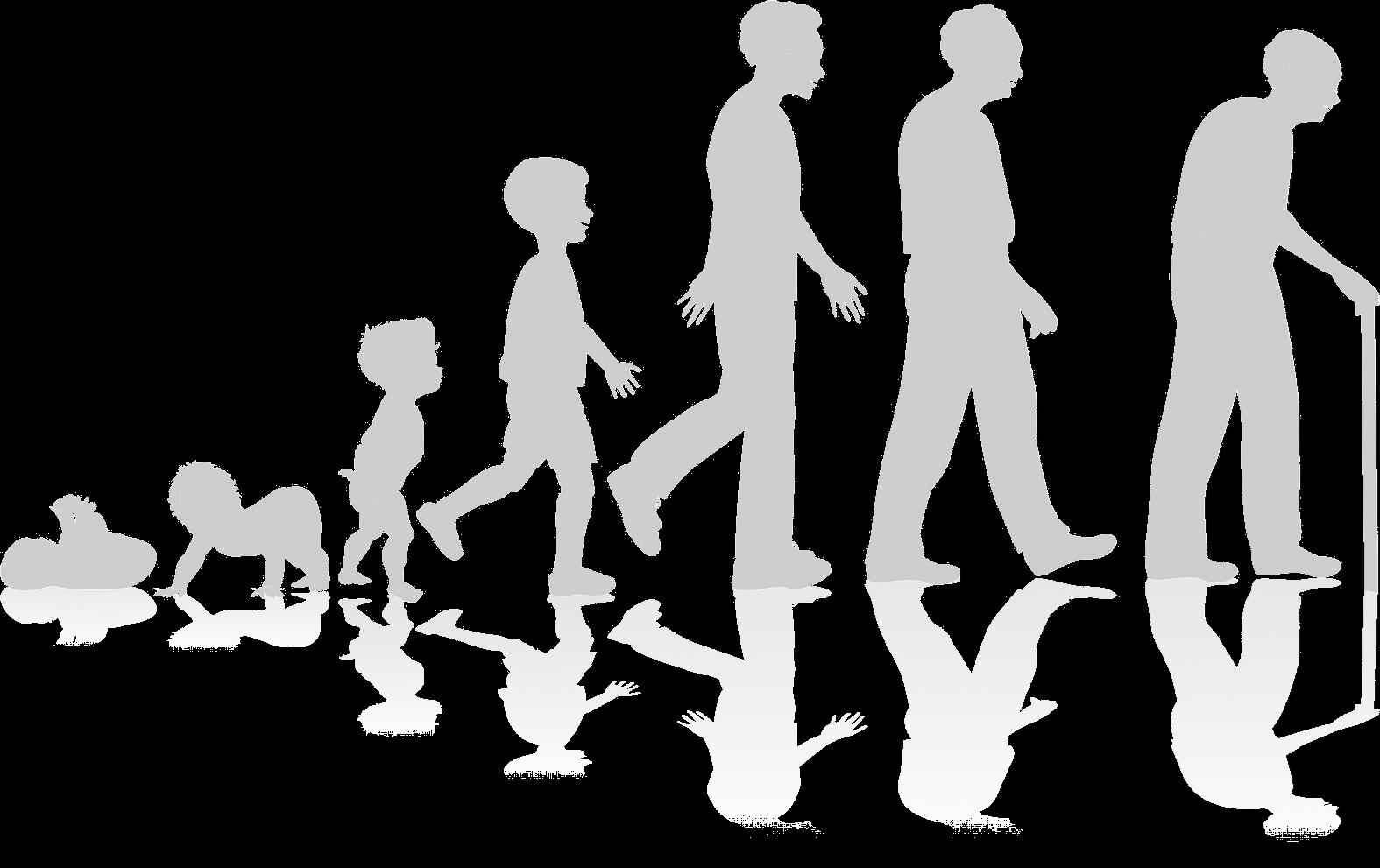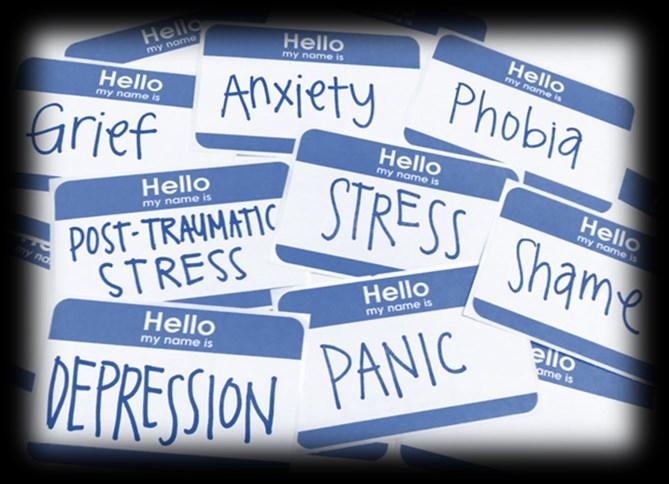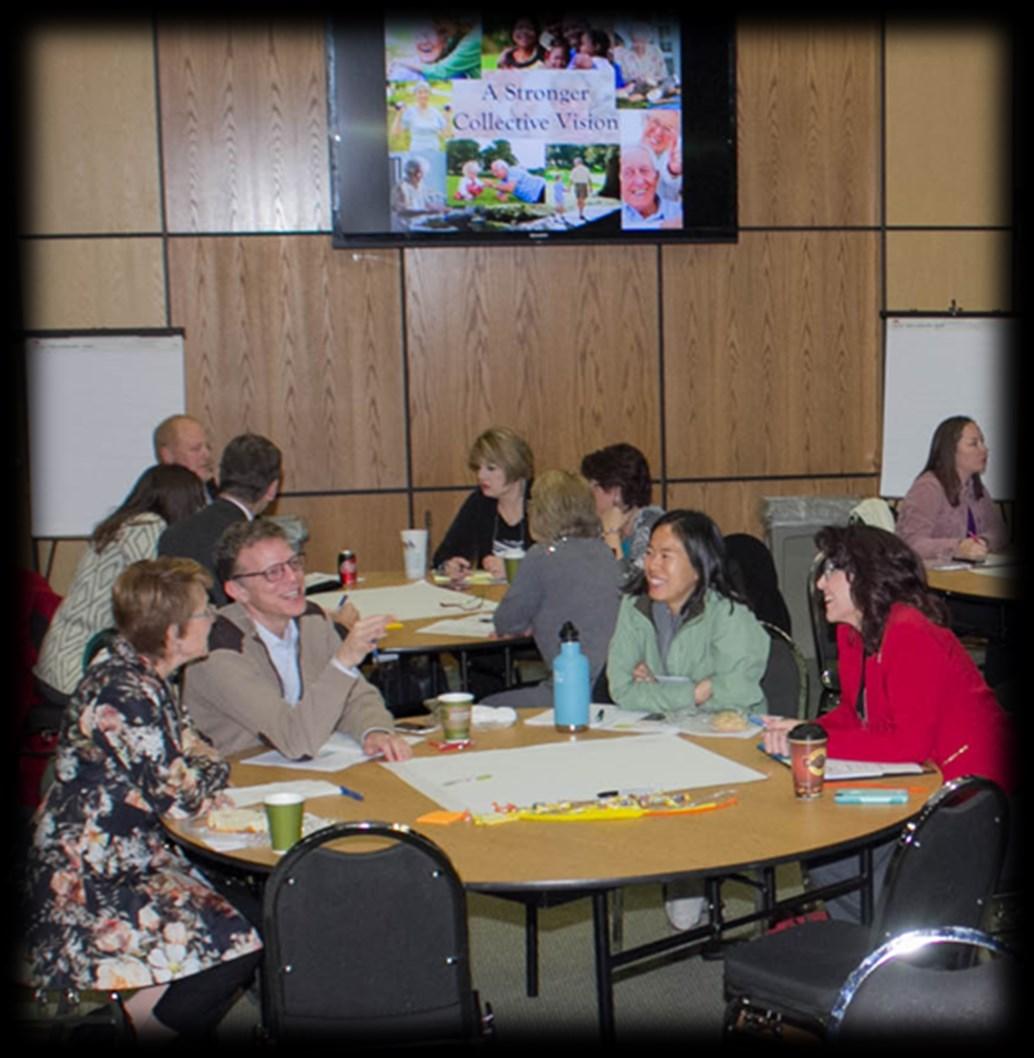
14 minute read
Substance Use Disorders
from OBHSP 2021
by northcareok
PREVENTION & TREATMENT
Evidence Based Practices
Advertisement
Integrated service delivery in primary care Community-based mental health outreach services for older adults Mental health consultation and treatment teams in long-term care
Family/caregiver support interventions Brief Interventions for Substance Use Disorders Psychological and pharmacological treatment
Oklahoma’s high suicide rate reflects the gap that exists between the programs proven to be effective and the services implemented and accessible.
According to IOM Report: In Whose Hands 2013:
Adults with a Mental Health or Substance Use Disorder receiving any treatment:
• 25% of Adults aged 18-65
10% of Adults aged 65+
Adults aged 65+ in need less likely to receive specialty mental health services:
17% of ages 18-64
1% of ages 65+
DEDICATE A COUNCIL FOR A HEALTHY AGING COMPREHENSIVE SYSTEM OF CARE
Behavioral health issues are a major threat to the health and independence of adults aged 65 years and older. As the population ages, the need for behavioral health services continues to increase. The consequences of failing to identify older adults in distress can result in serious injury or death, in addition to high medical costs and lost productivity. The “senior” label represents a continuum that begins, for some, at age 50 and may extend beyond one’s hundredth year. The State Plan defines older adults as aged 65 and over. We also recognize the wide variation in health, infirmity, and life stages among this wide and diverse age group of individuals that encompass over 50 years of individual
health, experience, environment, culture, support, personality, and a plethora of life changing moments. The core purpose of the Council is to recognize older adults as a vulnerable population with
incredible diversity and protect them accordingly.

Overview of Aging
Sensory changes (e.g. hearing, vision)

Mild cognitive changes (e.g. slowed thought process) Age - related sleep patterns

Depression Sadness, Loneliness
Severe cognitive impairments Debilitating chronic disease Frequent hospitalizations


COMMITMENTS TO ACTION ONE



Dedicate a council or agency division to spearhead efforts to create a comprehensive system of care for older adults



Council should include representation from state agencies and the community
Focus on acquiring funding to provide services through state agencies and affiliated care providers Act as the authority and oversight to unite all efforts under the comprehensive system of care
Maintain system wide integration of care that addresses the 8 dimensions of wellness

TWO


Build a constituency for geriatric behavioral health

Create a system for inter-agency meetings Formalize a collaborative of program managers Organize annual summits on the topic for the Governor, Secretaries, Commissioners, and Deputies to gain support to execute detailed initiatives specific to the health of older adults

THREE


Organize efforts to recognize older adults and their diversity

Enhance provider payment Align policies across State Agencies and community networks
Increase funding to agencies supporting older adult behavioral health • Provide oversight of the public health campaign Incorporate behavioral health screening across practice settings and communities
Promote use of the most current evidence based practices
FUND AND EXCECUTE A PUBLIC HEALTH CAMPAIGN



COMMITMENTS TO ACTION
ONE


Change Public Perceptions About Older Adult Wellness


Raise awareness of aging and behavioral health issues in the community Promote age appropriate and culturally sensitive services Support early identification of distress Increase referrals to community resources
Reduce behavioral health stigma Challenge ageism

TWO


Engage Healthcare Professionals

Educate providers with current evidence based interventions Popularize the development of geriatric inter-disciplinary team

THREE


Engage Communities

Promote the 5 D’s to identify suicide risk – Depression, Disease, Disability, Disconnectedness, Deadly Means Promote the Department of Human Services 211 online resource guide
Encourage community centers to make screening available Share resources to increase community based screening


INCREASE SCREENING

COMMITMENTS TO ACTION
ONE



Include behavioral health screenings with each older adult assessment,

application or interview at the initial point of engagement, including:


Anxiety Depression Substance Use
Suicide

TWO


Increase Referrals To:

Age appropriate and culturally sensitive services Supportive services in the community

THREE

Promote screenings in bother community and professional settings



FOUR



Provide screening tools, technical assistance on utilizing and interpreting the tools; technical assistance in locating local resources



FIVE



DEVELOP THE WORKFORCE
By 2030 older adults will make up 20% of the American population.
Projected 2025 Geriatrician supply and demand in the South Region: 2,150 professionals to meet the demand for over 8,000 with a difference of more than 6,000.
Over the next three decades, older Oklahomans (60+) are projected to be 25% of the total population, a sizeable increase from today’s 19%. By 2035, 1 in 4 Oklahomans will be over the age of 60 years.
From 2010 to 2040, Oklahoma is estimated to experience a 75% increase in demand for Geriatricians. The development of the existing workforce requires increasing provider knowledge and skills to provide appropriate services to older adults. Educational systems should work to incorporate key elements of geriatric competencies. Incorporating Assessment for trauma through ACE scores can improve appropriate-
ness of referral and effectiveness of the intervention. Training should include the following: • The eight dimensions of wellness and social determinants of health • Cultural competency reflecting generational differences • Geriatric skill-based training • ACE assessments • Trauma informed care approaches • Differences in the way symptoms present in the older adult The aging body tolerates alcohol and other substances different due to the normal aging process, metabolic changes and medications (National Institute on Aging) • Substance tolerance changes and indicators of a possible substance use disorder (SUD)
TRAUMA INFORMED CARE APPROACHES
The Jewish Federations of North America estimate that 90% of older adults have experienced at least one traumatic event during their lifetime. Research validates the correlation of high score ACE assessments and the resulting increased
risk for health problems later in life such as heart disease, strokes, cancer and depression. A link to cognitive decline, substance use and suicide. A connection to decreased function, quality of life and wellness. Evidence of coping and problem solving difficulties, social functioning deficits and social disconnectedness. Knowing this requires all provider types to insure that the care provided is trauma informed, culturally sensitive and age appropriate.
COMMITMENTS TO ACTION
ONE

Increase awareness of the need for culturally sensitive and age-appropriate services.




TWO



Use the current networks– Aging, Physical Health, Behavioral Health, and Disability to cross train leaders on the variety o folder adult issues and resources





THREE





Cross-train both clinical and non-clinical staff in each practice setting about he signs, symptoms and degrees of treatment available and effective for older adults



FOUR

Utilize Older Adult Peer Support Specialists




Extend the workforce and provide services in non-traditional settings Alleviate the stigma associated with seeking help





FIVE


Explore reimbursement options or increase in payment for screening

SIX
Expand required training to include the use of screening tools and appropriate referrals



SEVEN








APPENDIX




















SUD SCREENING APPROACHES 22
The Center for Substance Abuse Treatment recommends screening for SUDs as a part of routine medical visits for adults 60 and over.
Alcohol:
SBIRT – Screening, Brief Intervention and Referral for Treatment Cut-Annoyed-Guilty-Eye Opener (CAGE) Questionnaire: 4 - question in - person assessment, provides historical view. Alcohol Use Disorders Identification Test - Concise (AUDIT - C): 3 - question in–person, shows if engaging in risky drinking currently; combine w/ CAGE. Short Michigan Alcoholism Screening Instrument, Geriatric Version (SMAST-G): 10 - question paper assessment, which can be used in waiting room prior to in - person visit.
Tobacco:
Older adults are generally willing to talk about their tobacco use, so just ask. Fagerstrom Test for Nicotine Dependence (FTND): 6 - question paper assessment.
Prescription Medications:
Screening Tool of Older Person's Potentially Inappropriate Prescriptions (STOPP/START): validated screening instrument for inappropriate prescribing in the elderly.
___________________________________________________________ Tip for Brief Interventions: F.R.A.M.E.S 23
Feedback on personal risk, often provided from screening assessments e.g., “drinking may contribute to an existing medical problem such as hypertension”. Older adults tend to respond better to feedback than younger adults.
Responsibility for change comes from the older adult e.g., emphasizing personal control. Advice for making a change comes from the clinician e.g., older adults are often more receptive to a doctor’s advice.



22 SAMHSA-HRSA Center for Integrated Health Care Solutionshttps://www.integration.samhsa.gov/clinical-practice/sbirt/briefinterventions 23 Ibid
SUD SCREENING APPROACHES CONTINUED
Menu of options is given to the older adult e.g. discussion of alternative goals and strategies
to reduce drinking. Empathetic clinician style is more effective than confrontation. Self - efficacy will enable the older adult to pursue ongoing follow - up e.g., encourage optimism that chosen goals can be achieved.
TRAUMA
Traumatic experiences impact both mental and physical health and may trigger one or more of the following: depression, anxiety, panic attacks, substance use, memory / attention problems, Irritability, hypertension, coronary disease, immunosuppression, sleep disorders, gastrointestinal issues, fibromyalgia, and lung disease. 24
90% of older adults experienced at least 1 traumatic event 25 Typical events in the aging process can be triggering 26
Holocaust survivors Veterans Refugees Survivors of domestic violence
Victims of sexual abuse Victims of elder neglect or abuse Victims of child abuse
Victims of human trafficking Native Americans and Ethnic Minorities Loss of control and independence Decreased mobility Hearing or vision loss Death of loved ones
Loss of purpose Inability to utilize coping mechanisms
24 SAMHSA 25 The Jewish Federations of North America – Center for Advancing Holocaust Survivor Care https://www.holocaustsurvivorcare.org/ 26 Ibid


